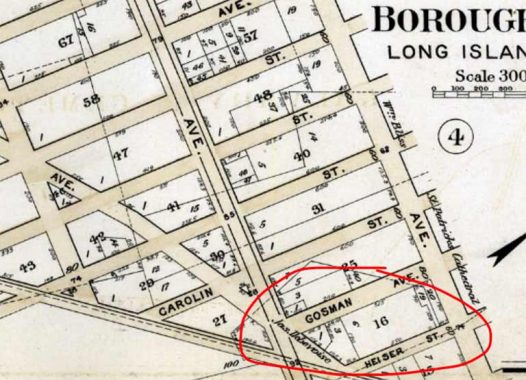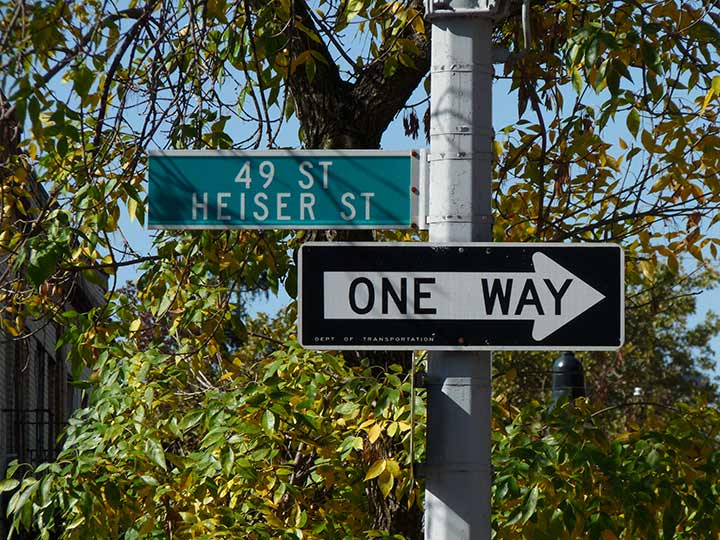
THE turn-of-the-century English Garden City movement of Sir Ebenezer Howard and Sir Raymond Unwin served as the inspiration for Sunnyside Gardens, built from 1924-1928. This housing experiment was aimed at showing civic leaders that they could solve social problems and beautify the city, all while making a small profit. The City Housing Corporation, whose founders were then-schoolteacher and future first lady Eleanor Roosevelt, ethicist Felix Adler, attorney and housing developer Alexander Bing, urban planner Lewis Mumford, architects Clarence S. Stein, Henry Wright, and Frederick Lee Ackerman and landscape architect Marjorie S. Cautley, was responsible for the project. Co-founder Lewis Mumford [the long-time architecture critic at The New Yorker] was also one of the Garden’s first residents. The part of Skillman Avenue that runs through Sunnyside Gardens has been renamed in his honor.
The design of the Gardens was novel in that large areas of open space were included in the plan. Construction costs were minimized, which allowed those with limited means the opportunity to afford their own homes. Rows of one- to three-family private houses with co-op and rental apartment buildings were mixed together and arranged around common gardens, with stores and garages placed around the edges of the neighborhood. Just about every interior window in the Gardens offers a view of a landscaped commons. A typical price for a two-story attached brick house in the development cost $9,500 in 1927!
Artists and writers were also attracted to the amenities of Sunnyside Gardens; in fact, the development in its early years was sometimes referred to as the ‘Greenwich Village annex’.” Artistic residents of the Gardens included painter Raphael Soyer, singer Perry Como and actress Judy Holliday. Crooner Rudy Vallee, NYPD Blue actress Justine Miceli, “Rhoda’s mom” Nancy Walker, and tough-guy actor James Caan also lived in Sunnyside.
I had always admired the Gardens, but never lived here. I did, however, move into a smaller facsimile, Westmoreland Gardens in Little Neck in 2007. I had no idea that the midblock passages were named (Jefferson Court, here) but the addresses likely go to the cross streets like this one, 48th.

I can’t think of another NYC neighborhood that carries both present and past street names on DOT signs, but it’s done in the Sunnyside Gardens area. Sunnyside’s streets are numbered in the overall Queens system, most of its streets also carry their old names, seen on this 1909 map: Heiser, Gosman, Carolin, Bliss (still the name of the 46th Street station), Grove, Packard, Laurel Hill. This is likely a nod to the MTA’s persistence in keeping the old names of three Sunnyside stops on the #7 train: 33rd Street (Rawson) 40th Street (Lowery) and 46th Street (Bliss).
In the 1930s, Queens signs carried old and new names, but that was likely for the benefit of oldtimers who knew the streets by the old names, which had been in use at the time quite recently.
As always, “comment…as you see fit.” I earn a small payment when you click on any ad on the site.
2/13/25


1 comment
The novel “Dissident Gardens” by Jonathan Lethem is set in a fictionalized Sunnyside Gardens. It is quite entertaining and is a multi-generational send-up of the counterculture from the founding socialist/communist era to the 21st Century “Occupy” movement
https://en.wikipedia.org/wiki/Dissident_Gardens